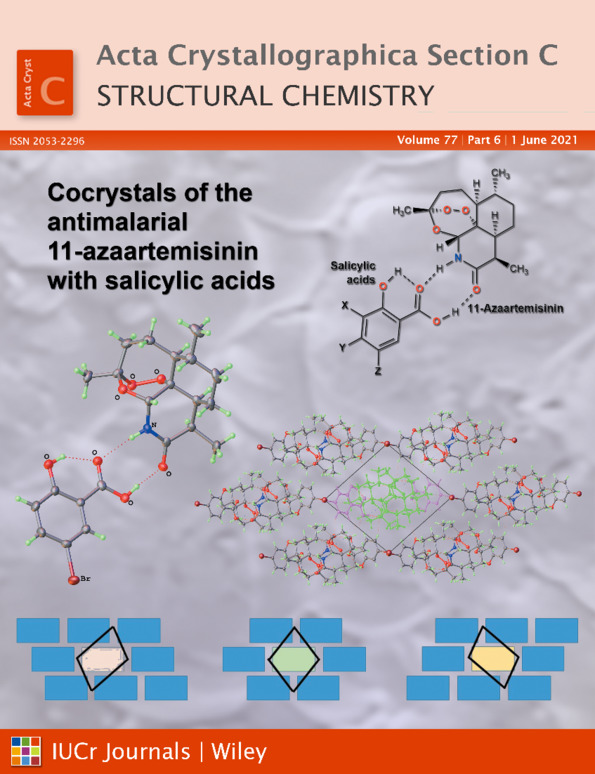Synthesis, spectroscopic investigation, crystal structure analysis, quantum chemical study, biological activity and molecular docking of three isatin derivatives
Abstract
Three isatin derivatives, namely, 1-allyl-3-hydroxy-3-(6-oxocyclohex-1-en-1-yl)indolin-2-one, C17H17NO3, 1-ethyl-3-hydroxy-3-(6-oxocyclohex-1-en-1-yl)indolin-2-one, C16H17NO3, and 5-bromo-3-hydroxy-1-methyl-3-(6-oxocyclohex-1-en-1-yl)indolin-2-one, C15H14BrNO3, were synthesized, crystallized by the slow-evaporation technique, characterized by 1H and 13C NMR spectroscopy, and analysed by the single-crystal X-ray diffraction (XRD) method. Quantum chemical parameters, such as the energy of the highest occupied molecular orbital, energy of the lowest unoccupied molecular orbital, energy gap, electronic energy, ionization potential, chemical potential, global hardness, global softness and electrophilicity index, were calculated. The druglikeness and bioactivity scores of the compounds were calculated. The activities of these isatin derivatives against bacterial strains, such as Eschericia coli, Proteus vulgaris, Shigella flexneri, Staphylococcus aureus and Micrococcus luteus, and the fungal strain Aspergillus niger, were determined using the well-diffusion assay method. Molecular docking studies were carried out to predict the binding mode of the isatin compounds with the penicillin binding protein enzyme and to identify the interactions between the enzyme and the ligands under study.




